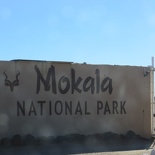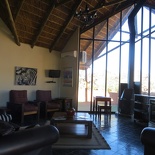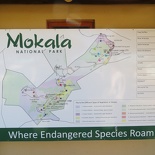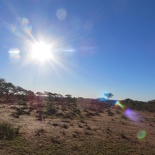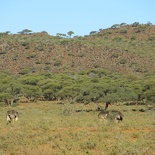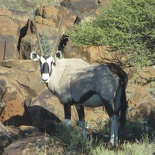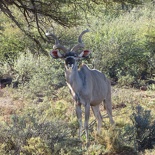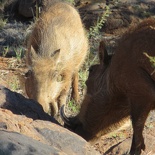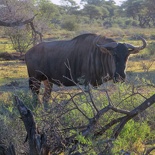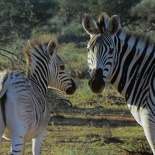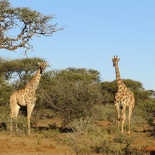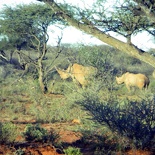Mokala Safari is one of South Africa’s newest national park, founded in 2007 in Northern Cape. The small park just over 26 thousands hectares in size (about a third size of Singapore) and is geographically located about 80km southwest from the city of Kimberly, 500km from Johannesburg and approximately 1,000km from Cape Town. The word “Mokala” in Setswana language stands for ‘camel thorn tree’ which is prevalent in the region typically found in the dry woodland and sandy areas of the park. Mokala is an important tree species found in the deserts of southern Africa, providing a staple food for most of the large animals in the savannas, especially in the park.
The park is Herbivore Park, with a habitat of sandy plains hemmed in by isolated dolerite hills. An absence of carnivorous animals makes the Safari safe for independent drive through. A dirt trail off the main highway brings you to the park’s Visitor center- a rustic yet modern log house complete with amenities and maps of the park. The Safari park is a self-drive park with no vehicles provided, visitors are expected to arrive on their own transport, and is largely accessible using ordinary 2 wheel drive car. However, a 4×4 might be best if you plan on visiting during the rainy season where the added traction prevents you from getting stuck. The road trails on my visit comprise of a mix of sand and gravel, with flat gradients and minimal hills, making the drive suitable even for my 2 wheel drive passenger van on all-weather tires. The park has two main tracks loops joining at the center of the park, offering different access to the animal habitats littered about the park. The roads however, can get muddy when it rains where a 4×4 will be appropriate. But such occurrences are rare and help from a park ranger is a call away.
During my drive I spotted a family of giraffes, some antelopes and zebras. There were lots of springbok all over the park. Rare sights include a family of white Rhinos and an occasional mountain of poop in the middle of the road. As with any safari, vehicles driving into the national park have to be dealt with caution given. Animals can be all seen in their natural habitat grazing. It is also not advised to startle the animals, like revving your engine or using your horn, which may behave unexpectedly or panic when startled by loud noises. A quiet vehicle is recommended if you wish to watch the animals in their natural habitat without scaring them away into the vegetation.
It is nice seeing the animals in the open, some are curious, while some wary of the new foreign vehicle object which occasionally passes by their turf. The animals can be seen grazing, crossing roads or even sun bathing in the middle of road, at times you will just switch off your engine and wait patiently for the family and their calves to pass by or cross the road in front of you. As all the animals in the park are non-carnivorous, don’t expect to see the complete African “big five” (African lion, African elephant, Cape Buffalo, African Leopard, and Rhinoceros) here without the big cats: the African Lion and Leopard.
The drive through the national park is beautiful, complete with unusual scenery complemented by big camel thorn trees. Game drives including night drives available, but subject to seasonal availability as the park usually closes by nightfall. You will be good for 3 hours to half a day exploring the park, especially stopping at times for pictures, a relaxing way to enjoy the savanna from the comfort of your own vehicle.
View more photos of Mokala park here.

